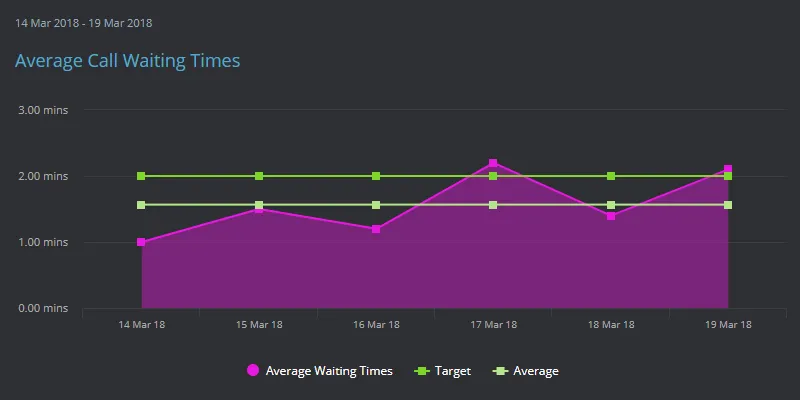
What is Average Waiting Time?
Average waiting times are the averages of all the times where a caller is not engaged with a representative, agent or customer service personnel. This can be either while a customer is being held in a call management system queue, being on hold for a response from another team member or waiting for the representative to complete a more detailed task.
No one is happy being held in any kind of queuing system, the process not only has a detrimental impact on the user’s levels of irritation, but the longer a user is kept in stasis the more likely they are to promote this negative experience via word of mouth or social media postings.
Average waiting times across all interactions is a good way to measure overall call center handling efficiency. This can help highlight areas such as, technical call management and inter communication systems channels, in addition to the proficiency of employees to handle caller enquiries.
They are also a good indicator for determining staffing levels for a call center and highlighting times when more agents are required.
Once average waiting times is measured, then steps can be taken to reduce the times. This will normally involve an analysis period to break down the areas, and then categorizing reasons for the waiting times.
Reducing Average Waiting Times
There are several steps you can take to reduce average waiting times for this KPI, such as:
- Increase the number of customer service agents during high volume times.
- Collect the subjects of the most frequent calls and investigate the feasibility of providing this information via your automated call management system.
- Categorize your callers into low, medium and high-level knowledge requests – and channel these callers to the most knowledgeable agents before their initial contact.
- Look at increasing agents available at historically busy times.